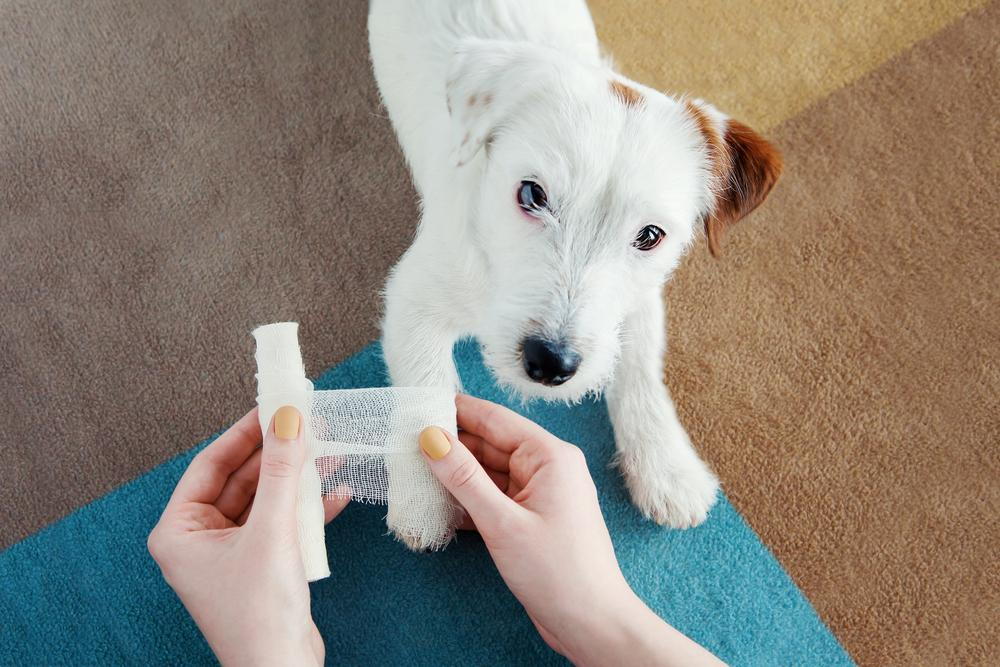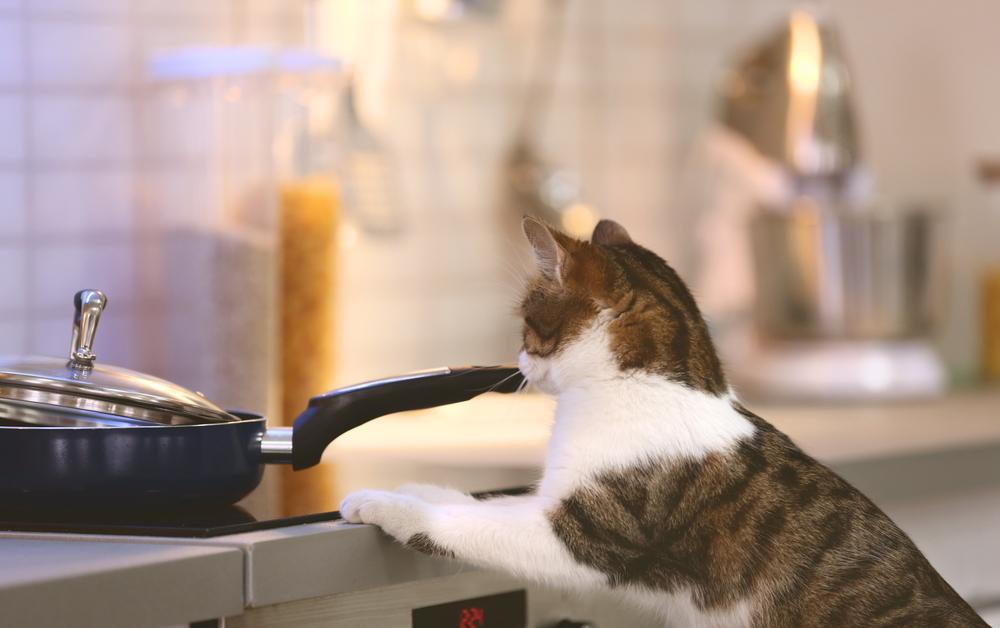Caring for your pet is rewarding. However, to help keep your furry pal safe from household toxins and dangers, you need to pet-proof your home by ensuring your pet cannot get into anything harmful. Just as you do all you can to keep your child safe in your home, pet-proofing is essential to create a safe environment for your furry friend. Our Sarasota Animal Medical Center team offers tips to pet-proof your home and increase your four-legged friend’s safety.
Potential pet hazards
Your pet is endlessly curious and has a knack for finding all manner of things to investigate. What might seem run-of-the-mill to you can be particularly interesting to your pet. Walk around your home and look for these potential hazards from a pet’s perspective by kneeling on the floor to observe them from your furry pal’s eye level. Consider these pet toxins in your home, including:
- Medications
- Toxic plants
- Sharp items
- Household cleaners
- Mothballs
- Potpourri and essential oils
- Paints and paint thinners
- Small, ingestible objects
- Pesticides and fertilizers
- Electrical cords
- Toxic foods such as chocolate and the sugar substitute xylitol
- Automotive fluids such as antifreeze
Secure items that are hazardous to pets
After you have identified potential pet dangers in your home, you can secure them or remove the items from your pet’s reach. Following these pet-proofing tips:
- Keep hazards inaccessible to pets — Store household cleaners, chemicals, and medications in locked cabinets or on high shelves. Bags and purses often contain chocolate, medication, and xylitol-based gums and candies, which are toxic to pets. Store purses and backpacks in a secure closet or on a high hook out of your pet’s reach. In addition, cover all trash cans with a secure lid to prevent your pet from exploring their contents, which may contain toxic food, sharp objects, and other unsafe items.
- Cover electrical cords — Use cord protectors or hide cords behind furniture to prevent chewing.
- Make a clean sweep — Pick up small objects that could fit in your pet’s mouth from the floor and low-lying tables.
- Create no-pet zones — Use baby gates or doors to create zones that are off-limits to pets, such as areas with toxic plants or other unsafe items.
- Use pet-friendly cleaning products — Use pet-friendly cleaning products or keep your pet in a separate area when cleaning. Ensure the floor is dry before allowing your pet to walk on it.
Create a pet-safe room
Designate a safe area where your pet can retreat when they feel overwhelmed or anxious. This space could be a cozy corner with a comfortable bed or a crate that serves as a den-like space. Ensure this area is free from hazards and easily accessible to your pet, and add many toys and games to help mentally enrich them. A family room is a good option for a pet-friendly space because your pet will benefit from spending time with you.
Supervise your pet when outdoors
Most pets, especially dogs, love to investigate the outdoors. Ensure your backyard is securely fenced to prevent your pet from wandering off or encountering dangerous wildlife. Check the perimeter regularly for holes or gaps through which your pet could escape and always supervise your furry pal’s outdoor time to ensure they remain safe.
Keep your pet safe when away from your backyard by ensuring they are on a leash during walks or while at the park. Remember that many lawns may be treated with pesticides and chemicals, so do not allow your pet to chew grass. Ensure you wipe their legs and paws after an outing. In addition, remember that water in puddles, ditches, and drainage areas might contain toxins such as vehicle fluids. Therefore, when away from home, always bring bottled water and a portable bowl so your pet only drinks clean water.
Be prepared for pet emergencies

Despite your best efforts to keep your four-legged friend safe, accidents and emergencies occasionally occur. Put together a pet first aid kit to treat minor cuts, insect bites, or other non-life–threatening accidents. Know the location of your nearest veterinary emergency clinic and keep your pet’s medical records, crate or collar and leash, and other essentials at hand. Save our Sarasota Animal Medical Center and the Pet Poison Helpline numbers on your phone for quick access.
Pet-proofing your home is essential to ensuring your furry friend’s safety and well-being. By identifying potential hazards, securing dangerous items, and creating a pet-friendly environment, you can help prevent accidents and keep your four-legged pal healthy and happy. By following our pet-proofing tips, you have peace of mind knowing your furry pal is safe from household dangers. To learn additional pet-proofing tips, call our Sarasota Animal Medical Center team.

